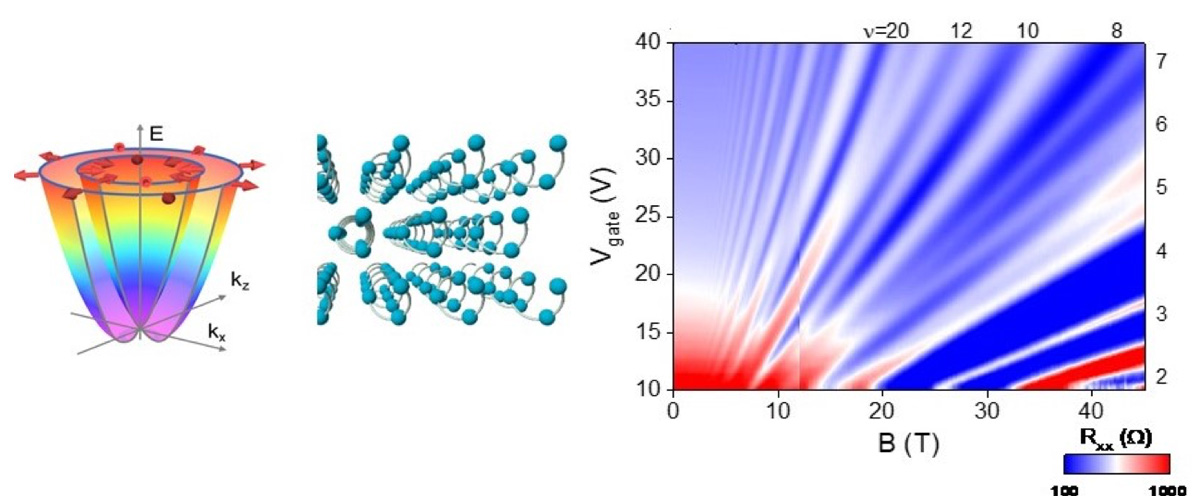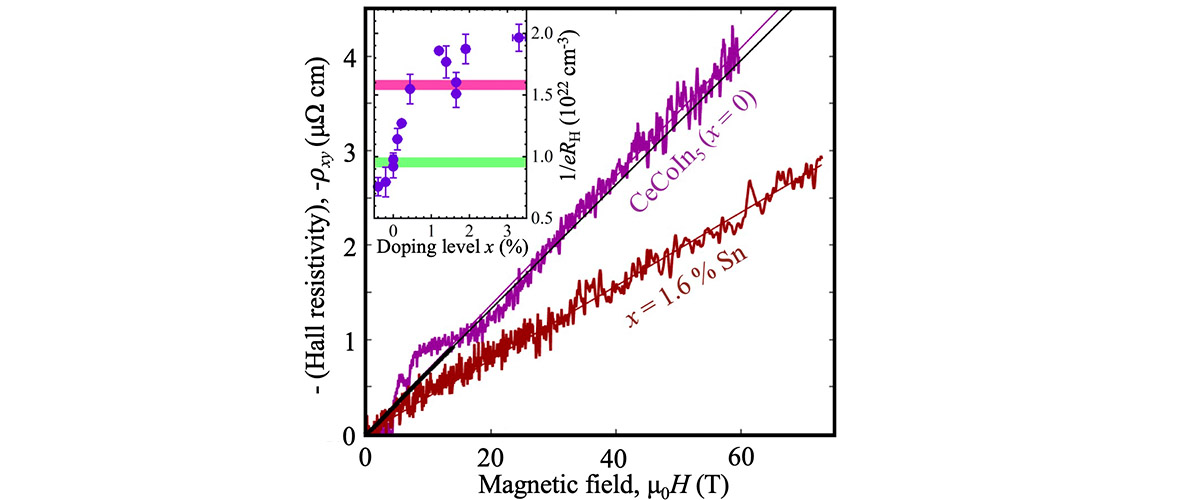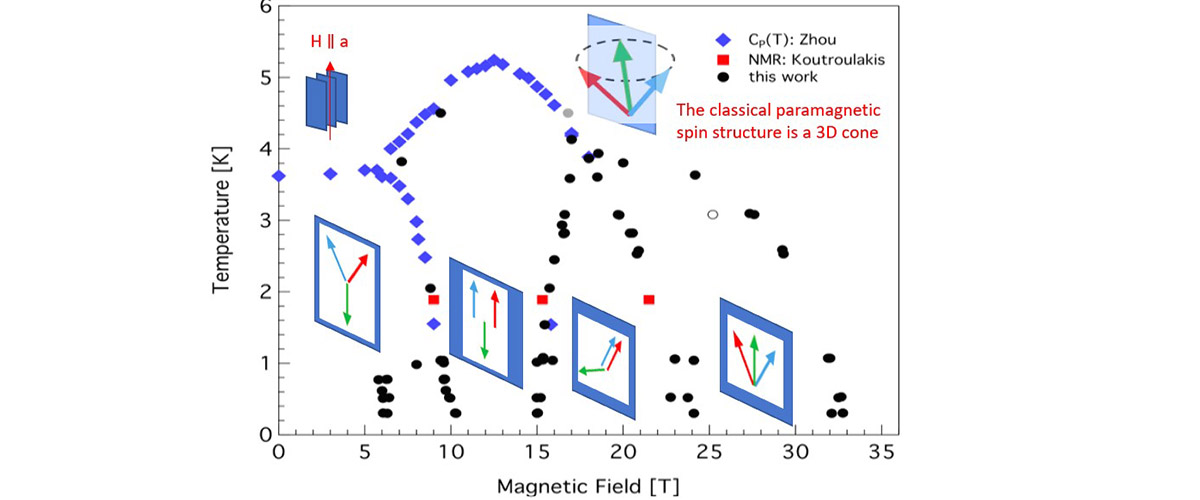What did scientists discover?
A new two-dimensional material, tellurene, was synthesized and a semiconducting device was fabricated from the thin film. Under strong magnetic fields, the quantum Hall effect was observed for the first time in tellurene. A finite Berry phase (equal to π) was measured from the quantum Hall oscillations measured in resistivity (bottom figure), suggesting the existence of Weyl fermions near the conduction band edge of tellurium, presumably associated with its chiral crystal structure (top figures).
Why is this important?
Weyl fermions have been sought in high-energy physics for nearly a century. Recent discoveries in condensed matter physics revealed that low-energy Weyl fermions can exist in topologically non-trivial materials. Our findings provide a new material to allow scientists to explore the physics of Weyl fermions in a controllable manner.
Who did the research?
Gang Qiu, Chang Niu, Yixiu Wang, Mengwei Si, Zhuocheng Zhang, Wenzhuo Wu, Peide D. Ye
Purdue University
Why did they need the MagLab?
The quantum Hall effect is an extraordinary behavior of electrons confined to a two-dimensional space that, in tellurene, can only be observed under strong magnetic fields and sub-Kelvin temperatures. By taking advantage of the 45 Tesla hybrid magnet - the strongest DC magnet in the world - the detailed energy spectrum of tellurene was resolved, unveiling its non-trivial topological properties directly from electrical resistivity.
Details for scientists
- View or download the expert-level Science Highlight, Tunable Weyl Fermions in Chiral Tellurene in High Magnetic Fields
- Read the full-length publication, Quantum Hall effect of Weyl fermions in n-type semiconducting tellurene, in Nature Nanotechnology
Funding
This research was funded by the following grants: G.S. Boebinger (NSF DMR-1644779); Peide D. Ye (NSF/AFOSR 2DARE Program, ARO, SRC, NSF CMMI)
For more information, contact Tim Murphy.






